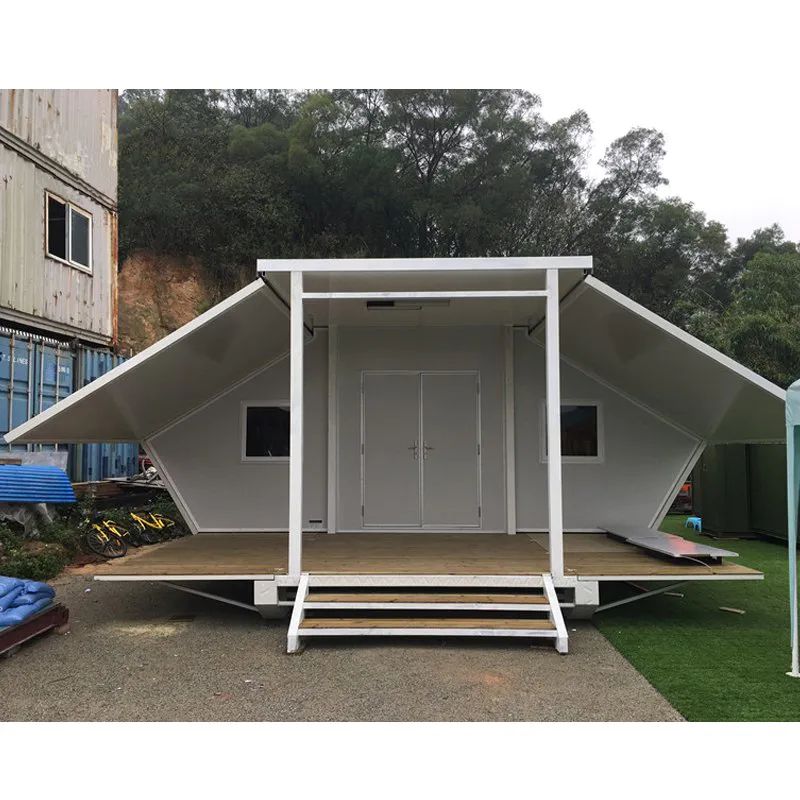 +86 13902808995 (WhatsApp/微信)
+86 13902808995 (WhatsApp/微信)  siwenchen@chinawellcamp.com
siwenchen@chinawellcamp.com

The changing consumer preference, technological advancements, and a growing emphasis on sustainability are some of the factors that have contributed highly to the evolution of expandable camp houses in the outdoor hospitality. Traditional camping experiences have evolved into comfortable, environmental friendly options that are able to accommodate different budgets and wide range of guests seeking to immerse themselves into the nature. Although camping remains popular, there have been a noticeable growth when it comes to the demand of expandable house camps following the various benefits they offer. The rise of expandable house camps has been a journey witnessed for many years.
Early beginnings
Nomadic tribes worldwide have been using tents of various designs since before the 1900s. These tents were ingeniously crafted with features like adjustable poles and overlapping sections, enabling them to adapt to diverse weather conditions and group sizes. Furthermore, the tents were lightweight, and easily transportable. It is from this ingenious design that the concept of expandable camp houses can be traced back to. Unlike the modern tents they lacked the amenities and the expected comfort.
Introduction to Portable Cabins and RVs
In the mid-20th century there was introduction of portable cabins and recreational vehicles (RVs). The structures were an improvement of the traditional tents and they were more appealing to the guests since they offered more space, convenience, and amenities. This is the era where the evolution of the expandable camp houses gained momentum. Portable cabins by then they were prefabricated structures that would be transported and assembled in remote locations where as RVs combined both accommodation and transportation in a single unit thus allowing the owners/users flexibility to visit different places. Both were equipped with basic living facilities such as bathrooms, sleeping areas, and kitchens.

The Rise of Expandable Camp Houses
Expandable camp houses have resulted from evolving consumer demands and technological advancements. The 2010s marked the birth of modern expandable camp houses. Unlike portable cabins or RVs with fixed dimensions, these houses feature collapsible walls, inflatable components, foldable furniture, and modular designs that maximize space utilization. The houses are also manufactured using environmentally friendly materials and energy-efficient systems, following a growing emphasis on sustainability. Most of these materials are galvanized steel structure and sandwich panels, which can withstand typhoons of magnitude 11 and earthquakes of magnitude 7, and are very strong. Additionally, most of them have smart automation systems that allow users remote control of lighting, temperature, and entertainment systems. They are also equipped with luxurious interiors, featuring heating and cooling systems, hot water facilities, and entertainment options, thus creating an inviting ambiance for guests. Some models of the expandable camp houses have smart features like voice-activated assistants, automated climate control, and solar power integration.
Future Trends
The evolution of expandable camp houses is an ongoing process. Following changing consumer preferences and technological advancements, we expect to witness more trends and innovations in the world of outdoor accommodations. Some of the anticipated trends include:
Enhanced Mobility and Durability: Currently, maintaining an expandable camp house is expensive. It is expected that in the future, there will be advances in materials and engineering leading to camp houses that are durable with robust materials and improved structural designs. The houses will also be lighter, making it easier to transport and assemble them.
Smart Technology Integration: More smart technology is expected to be integrated into future expandable camp houses. This may include features such as guests having mobile apps or voice commands that allow them to enhance convenience and comfort, automated climate control, entertainment, and lighting.
Accessibility and Inclusivity: Currently, expandable camp houses are not very accommodating to elderly guests and those using wheelchairs. It is expected that in the days to come, the houses will be more accessible and inclusive for guests with diverse needs by having features like wheelchair ramps, child-safety features, and sensory-friendly design elements.
Sustainable Solutions: While the current expandable houses are sustainable, the future of these houses promises more sustainable solutions such as increased integration of solar panels for powering lights, appliances, and air-conditioning, greywater recycling systems, and increased construction of these houses using recycled composites and sustainable sources of wood.
From simple portable cabins and RVs, expandable camp houses have redefined outdoor living experiences. Their evolution reflects the continued shift in the hospitality outdoor accommodation sector, driven by consumer preferences, technological advancements, and the growing demand for sustainable spaces. So far, the future of expandable camp houses looks promising, following the continued embrace of the trend in the hospitality industry because of the benefits the houses offer.
Copyright © 2022 广东威尔坎普钢结构模块化房屋有限公司 All Rights Reserved Design by www.prefab-house.com